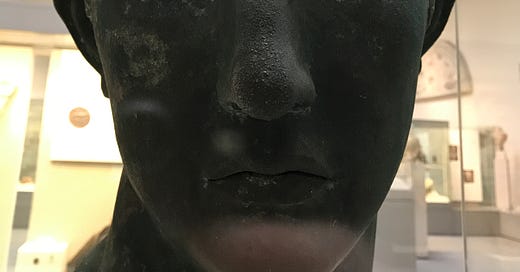51: Three hours in the British Museum
Hello, I hope you’re doing well.
Here’s Border Crossing issue #51. Thank you for reading this email, I appreciate you. If you’ve newly signed up, a warm welcome, thanks for hanging out.
This time, I wander around the British Museum (my first visit in years) and realise that how I comprehend museums has fundamentally shifted. This one includes a few p…


